
Please tell us what you do in your country at Christmas time.
Click the picture to watch the ebook about Christmas traditions in Poland:
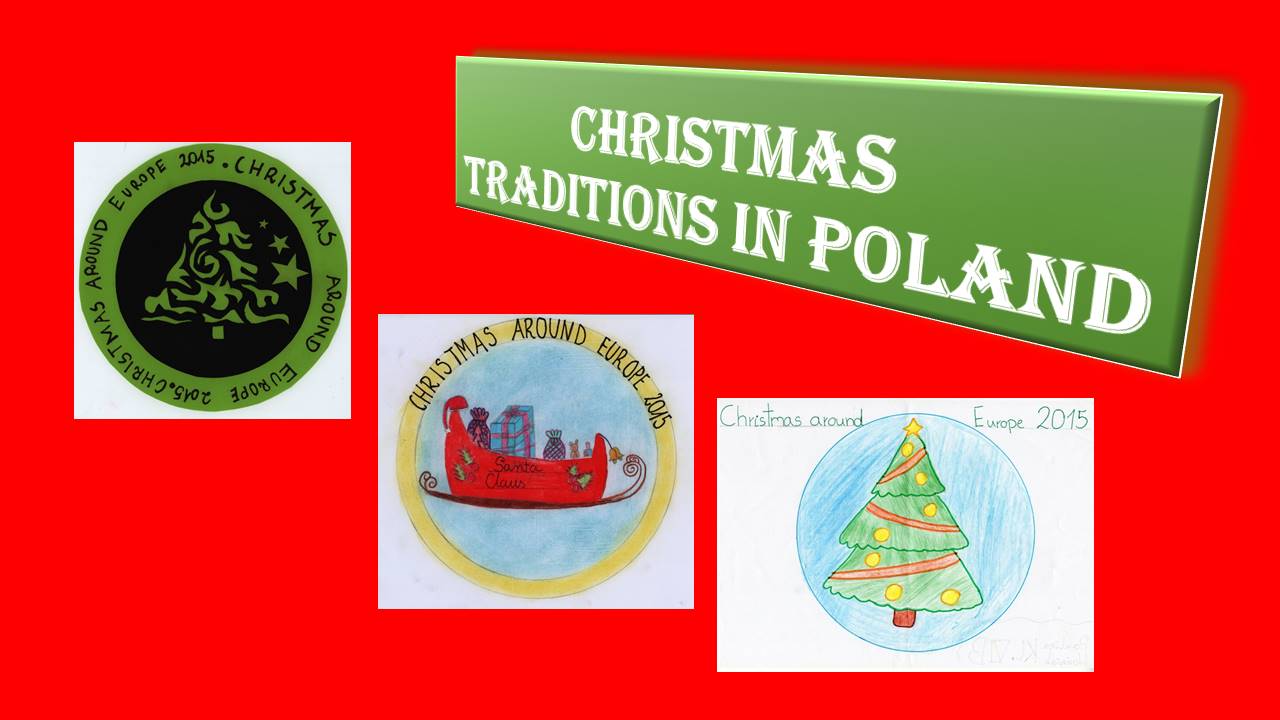

Here are Yulia Fedyk's pupils' projects about Ukrainian Christmas traditions
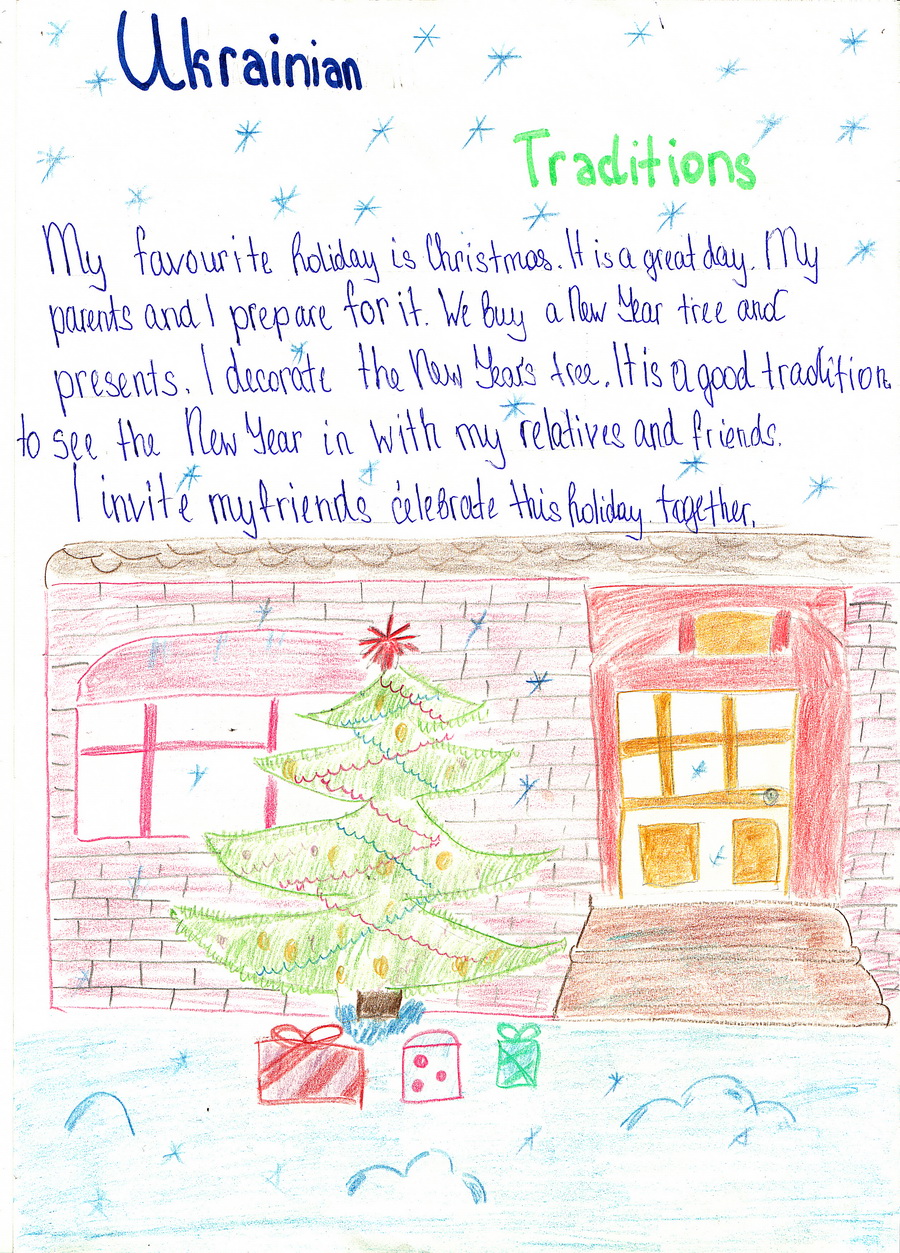
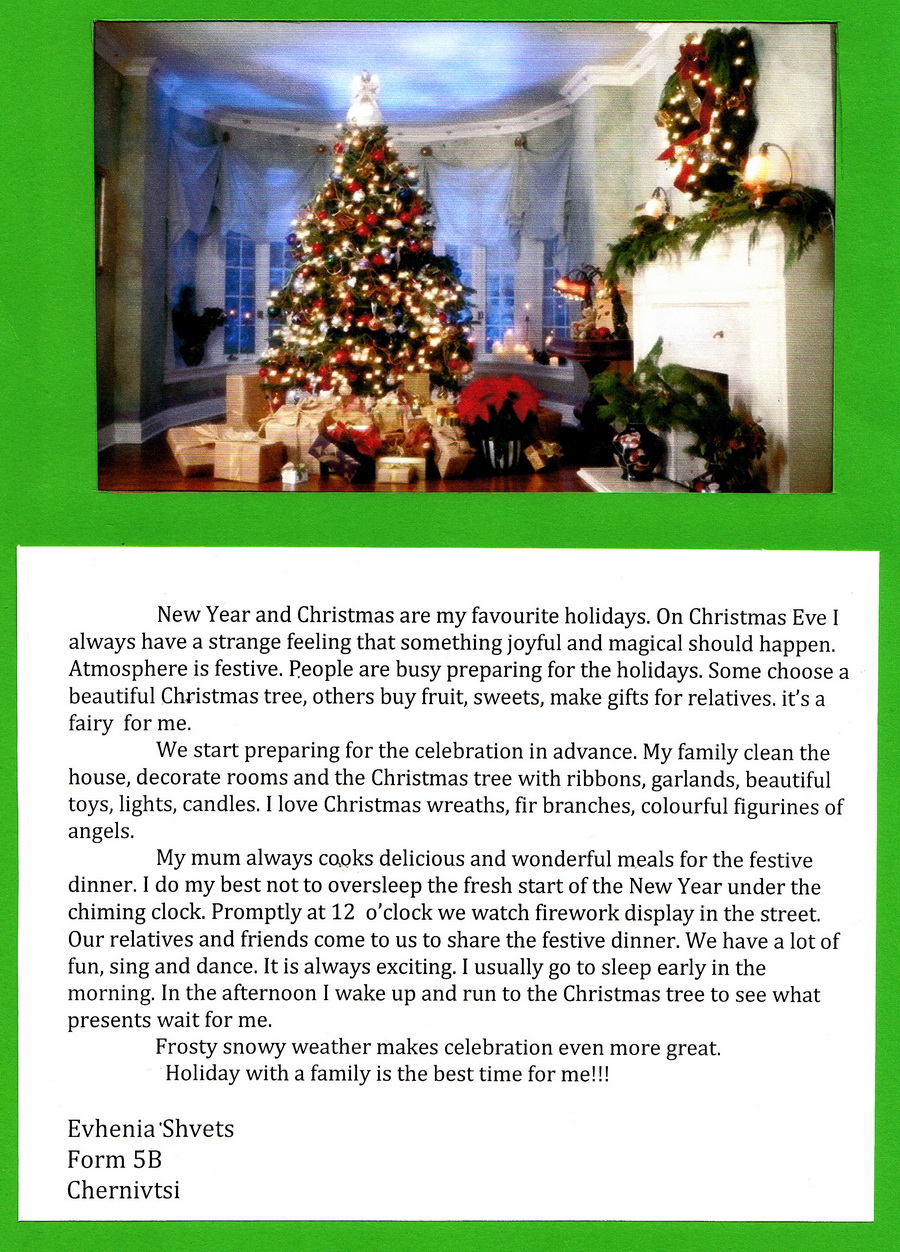
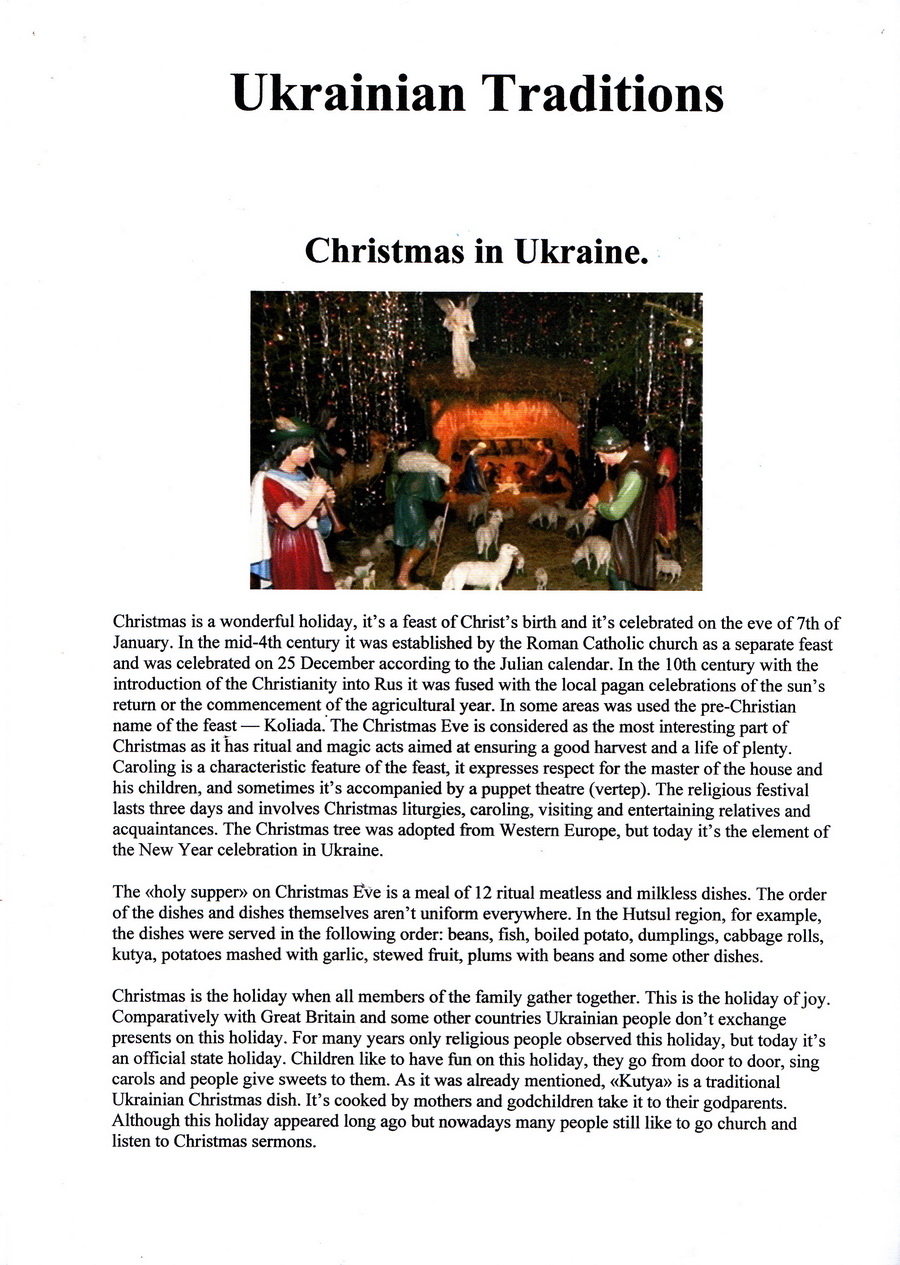
A mini book about Christmas traditions
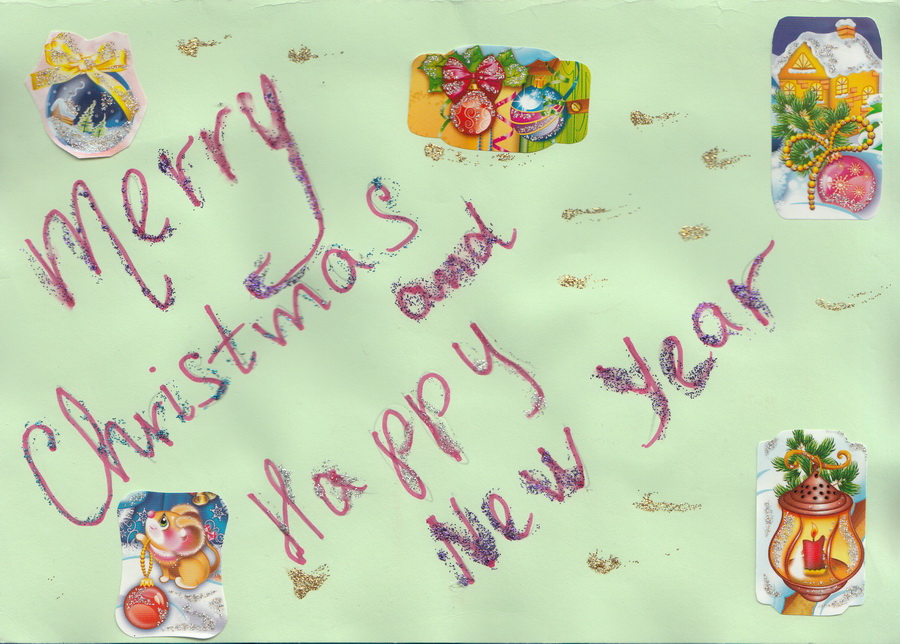
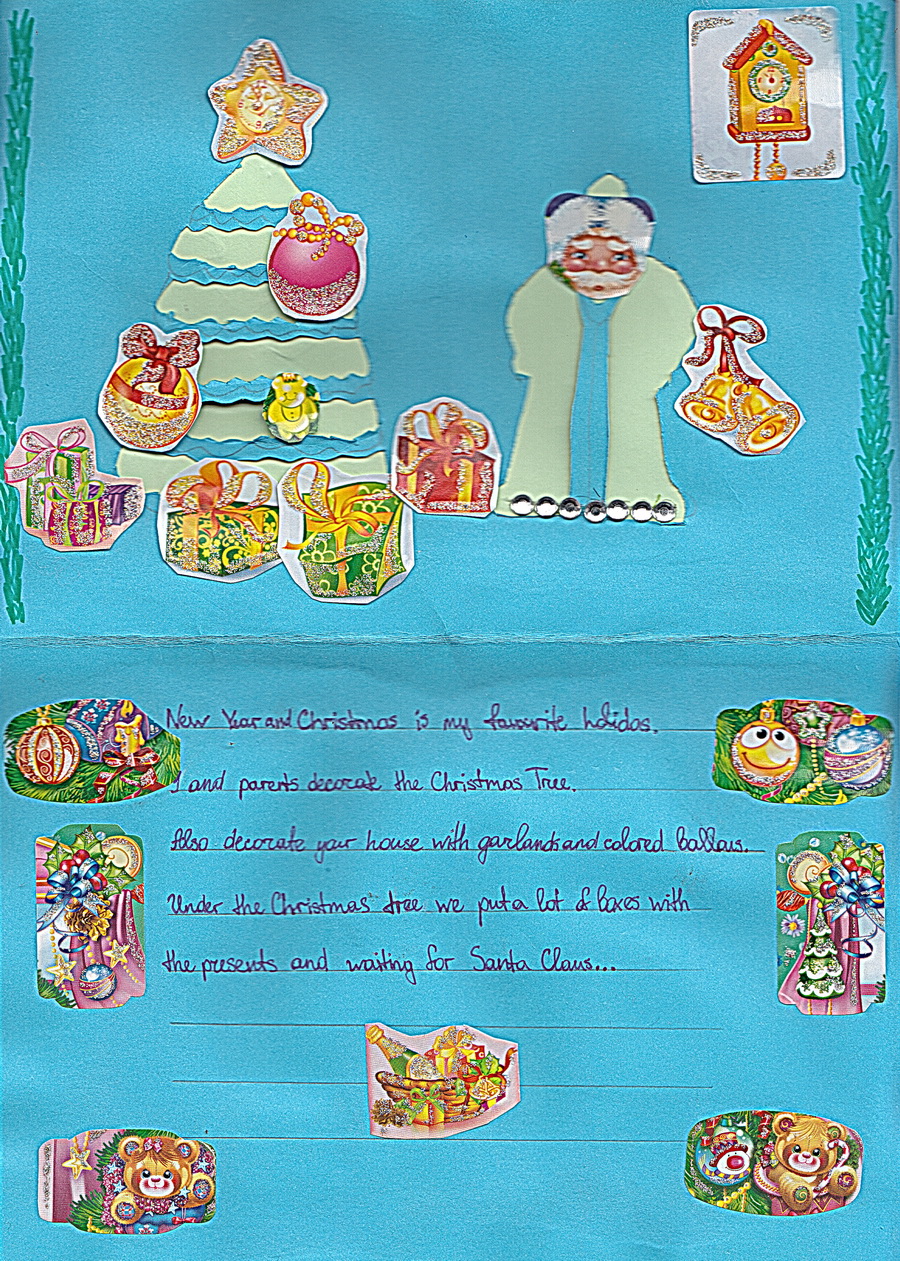
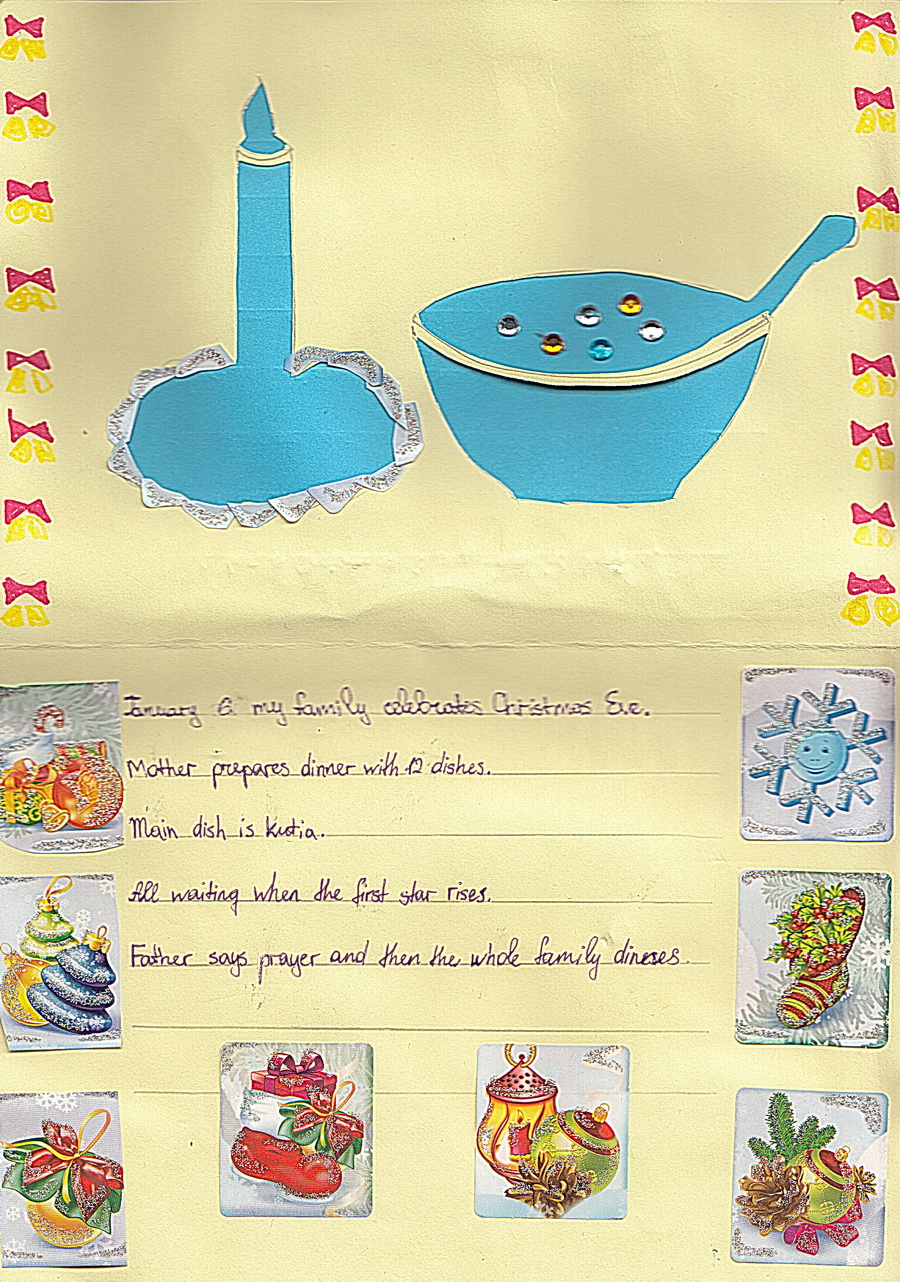
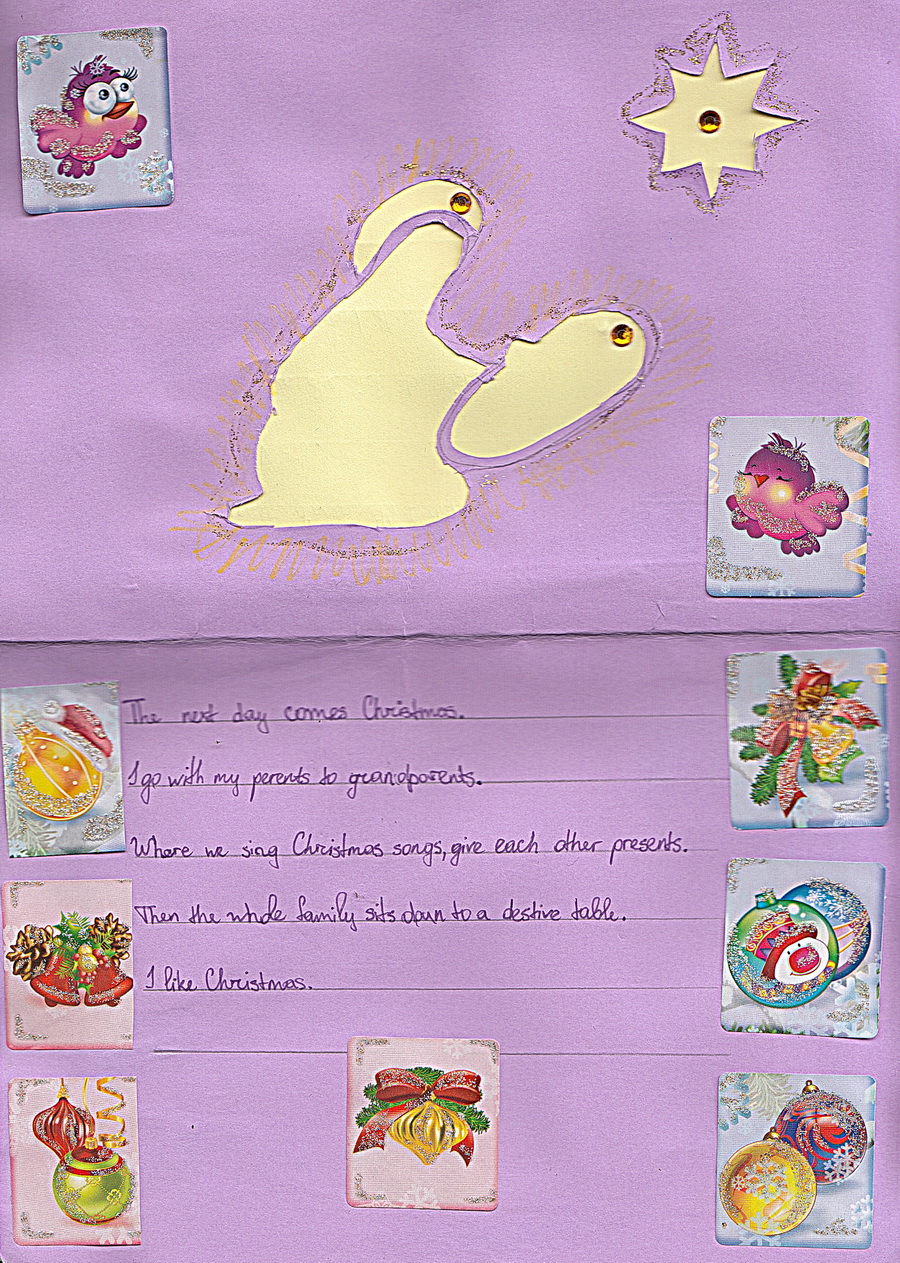
CHRISTMAS IN SPAIN
Special dates and Traditions
In Spanish Happy/Merry Christmas is 'Feliz Navidad'; in Galician 'Bo Nadal'
During the Christmas period, most Spanish houses will have un portal de Belén (a Christmas Nativity Scene).
Very often, Spanish children will sing Christmas carols (villancicos) whilst admiring el belén. Christmas carols are sung and accompanied by traditional instruments such as the zambomba (a type of seasonal drum), the carraca (a ratchet like noisemaker), the tambourine, and of course the guitar
On the 22 December there is a very famous Spanish Christmas lottery, Lotería de Navidad, which is likely the most followed Spanish lottery during the entire year.The prizes are very large sums of money and most Spanish people buy tickets.
Christmas Eve –Nochebuena
On 24 December, the King of Spain makes a traditional Christmas Eve speech. This speech is called El Discurso Nacional De Su Majestad El Rey and it is shown on all the Spanish television channels.
Santa Claus, known in Spain as Papá Noel, brings gifts for children to open on Christmas Eve, which means that on Christmas Day parks and “plazas” fill with children playing with their friends and showing them their new toys.Children have some presents on Christmas Day, but most are opened at Epiphany.
In some parts of Spain, you can find other types of traditional figures such as “O apalpador “ in Galicia (a coal vender who descends from Lugo mountains to check if children have eaten properly).
Christmas Day-Navidad
December 28th is 'Día de los santos inocentes' or 'Day of the Innocent Saints' and is very like April Fools Day in the UK and USA. People try to trick each other into believing silly stories and jokes. Newspapers and TV stations also run silly stories.
New Year's Eve is called 'Nochevieja' In Spain and one special tradition is that you eat 12 grapes with the 12 strokes of the clock at Midnight! Each grape represents a month of the coming year, so if you eat the twelve grapes, you are said to be lucky in the new year. All over Spain on New Years' Eve, people will be wearing red underwear which is thought to bring good luck.
The most important place to be at midnight for the New Year celebrations is La Puerta del Sol, the main square in the centre of Madrid.
In Spain, Christmas Eve is a night for parties! A New Year party is known as un cotillón.
To say 'Happy New Year' you can either say 'Feliz Año Nuevo' or 'Próspero Año Nuevo.'
Epiphany Eve (January 5th)
The Three Kings arrive during the night of 5 January and leave presents for the children. The Three Kings in the Spanish Epiphany are: Melchior, who has long white hair and a white beard, Gaspar, who has brown hair and a brown beard .Balthazar, who has black skin . Gifts are often left by children for the Kings, a glass of milk for each King and some biscuits. Sometimes a bucket of water is left for the camels that bring the Kings! If the children have been bad, the Kings might leave pieces of coal made out of sugar in the presents!
Some big towns and cities have Epiphany Parades “cabalgata de reyes”. During the processions, sweets are thrown into the crowd from the passing floats.
Although it was raining the threee wise made had their parade in Pontevedra this year.
Food and Drink -
The main meal takes place on Christmas Eve, la Nochebuena, and consists of cordero, lamb, bacalao, cod, or marisco, shellfish, which varies according to the region or the family's preferences.
Christmas Day (El Día de Navidad) is another special day for the family with an afternoon dinner similar to the one that took place on the previous night.
In Galicia (ou region ,in north-west Spain, surrounded by water) the most popular meal for Christmas Eve and for Christmas Day is seafood. This can be all kinds of different seafood, from shellfish and mollusks, to lobster and small edible crabs .
Traditional Spanish ham is very popular at Christmas. Many families buy a full leg of the raw, dried ham. It is very expensive and is for special occasions.
It is known as jamón serrano. Another variety is jamón ibérico.
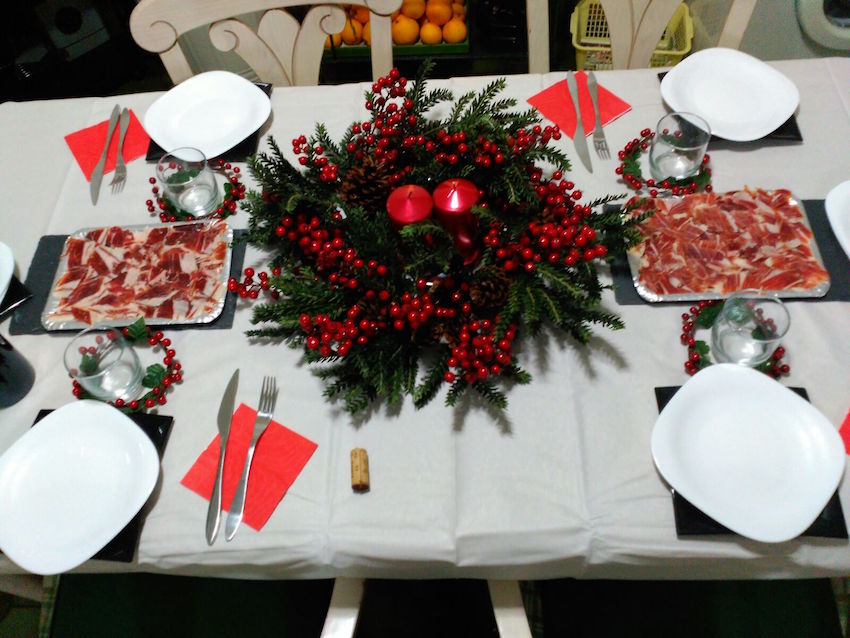
Christmas sweets:
El turrón, nougat.
This almond-based tablet traditionally comes in two versions, duro, hard, with whole almonds in a paste of sugar, honey and egg white, or blando, soft, where the ingredients are ground together.
Mazapán, marzipan figurines, are also popular, together with polvorones, soft crumbly cakes made with lard, flour and cinammon.
The 'lucky grapes', las uvas de la suerte, on New Year's Eve, Nochevieja- literally 'Old Night'., it's said to bring good luck if at each stroke of the bells at midnight you take one grape and make one wish, un deseo, for the New Year, el Año Nuevo.
Churros con chocolate:- a chocolate drink and long, thin fritters to dunk. It is a popular snack at Christmas time specially after finishing the long night parties at Christmas eve or New years eve.
A special cake called 'Roscón de Reyes' is eaten at Epiphany. Roscón means 'ring shape roll'. It is very doughy and is bought from a bakery on Epiphany morning an it contains a little gift.The one who gets it will wear the Kings crown.

You can visit these pages for more information about Christmas in Spain
http://www.donquijote.org/culture/spain/society/holidays/christmas-in-spain
http://www.idealspain.com/pages/information/christmasinspain.htm
http://www.whychristmas.com/cultures/spain.shtml
http://www.euroclubschools.co.uk/page34.htm
http://www.esqw.org/page94.htm
Here are some Christmas traditions in Engand:
(From Eastburn)
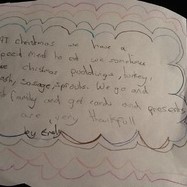
(From Steeton)
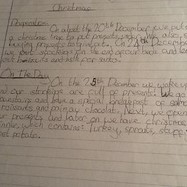
Here are some pictures of our English Christmas dinner:
turkey, roast potatoes, sprouts, carrots, stuffing, sausages, gravy;
Christmas pudding (made with raisins, sultanas and other dried fruits)
Christmas crackers (containing a paper crown, a joke and a little toy)
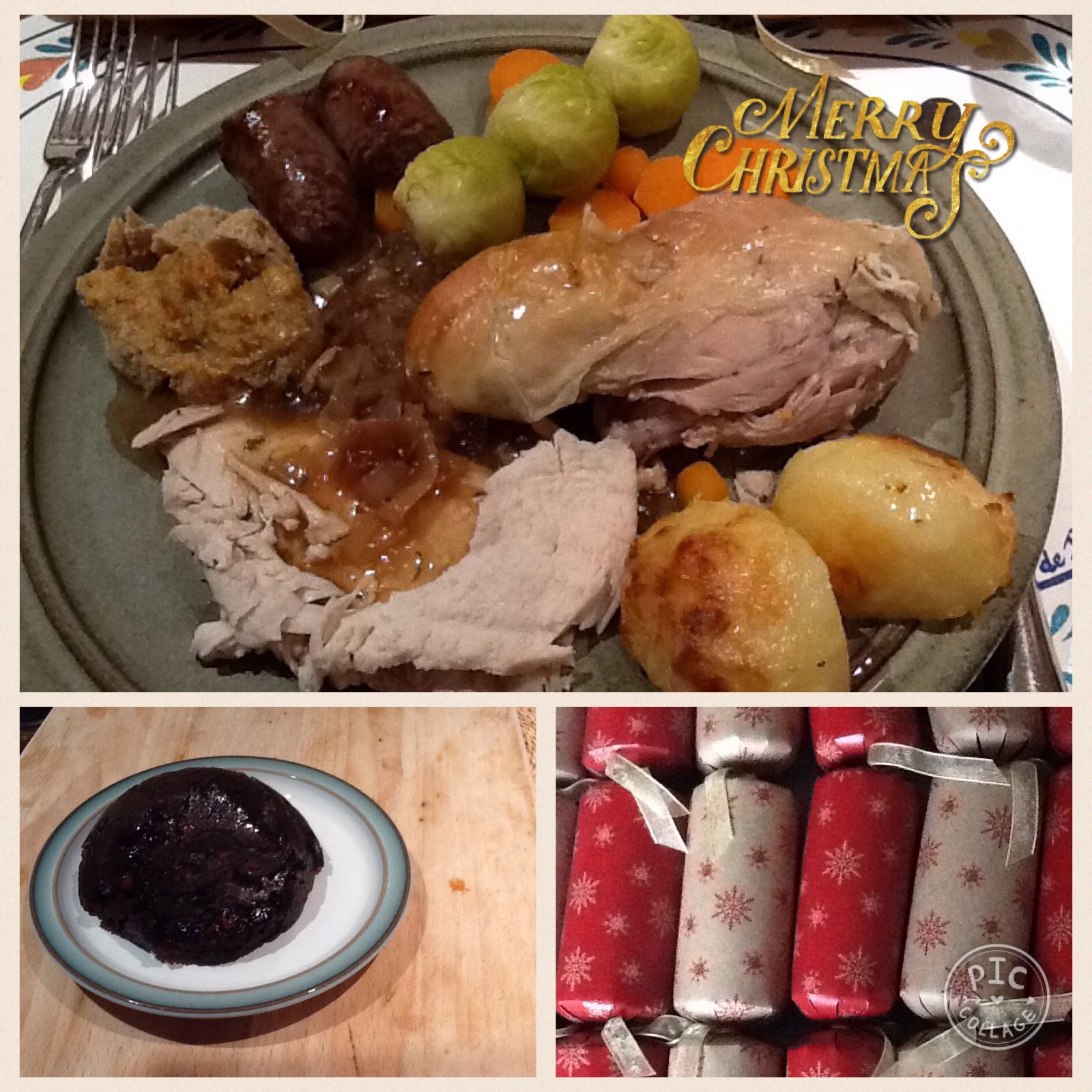
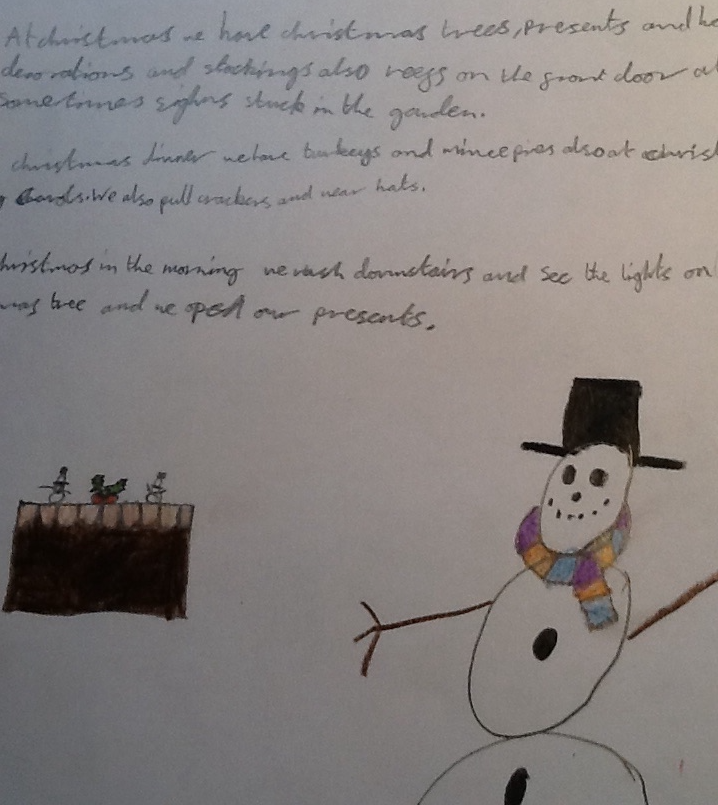
Can anyone turn this photo around please?
Christmas in England:
At Christmas we have Christmas trees, presents and house decorations and stockings. Also wreaths on the front door, also sometimes signs stuck in the garden.
At Christmas dinner we have turkeys and mince pies. Also at Christmas we sing carols. We also pull crackers and wear hats.
At Christmas in the morning we rush downstairs and see the lights on the Christmas tree and we open our presents.
Eastburn Year 5
Christmas traditions in England
In the UK (or Great Britain), families often celebrate Christmas together, so they can watch each other open their presents!
Most families have a Christmas Tree (or maybe even two!) in their house for Christmas. The decorating of the tree is usually a family occasion, with everyone helping. Christmas Trees were first popularised the UK by Prince Albert, the husband of Queen Victoria. Prince Albert was German, and thought that it would be good to use one of his ways of celebrating Christmas in to England.
Holly, Ivy and Mistletoe are also sometimes used to decorate homes or other buildings.
Most villages, towns and cities are decorated with Christmas lights over Christmas. Often a famous person switches them on. The most famous Christmas lights in the UK are in Oxford Street in London. Every year they get bigger and better. Thousands of people go to watch the big 'switch on' around the beginning of November.
Christmas dinner is usually eaten on Christmas day. The picture below shows some of the popular foods eaten during a Christmas dinner in the UK and some interesting facts.

Oakworth, Year 5